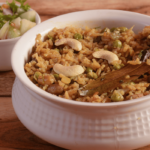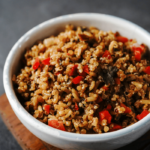The Best Fluffy Pancakes recipe you will fall in love with. Full of tips and tricks to help you make the best pancakes.
Table of Contents
ToggleHow Many Whistles to Cook Basmati Rice in a Pressure Cooker

Cooking basmati rice in a pressure cooker is a convenient and time-saving method. It allows you to achieve perfectly cooked rice with minimal effort. But one common question that arises when cooking basmati rice in a pressure cooker is, “how many whistles should I wait for?” In this comprehensive guide, we will explore the optimal number of whistles required to cook basmati rice in a pressure cooker.
1. Introduction
Basmati rice is known for its long grains, aromatic fragrance, and delicate flavor. When cooked correctly, each grain remains separate and fluffy. While there are various methods to cook basmati rice, using a pressure cooker offers convenience and efficiency. The number of whistles plays a crucial role in determining the doneness and texture of the rice. Let’s explore the benefits of cooking basmati rice in a pressure cooker.
2. Benefits of Cooking Basmati Rice in a Pressure Cooker
Using a pressure cooker to cook basmati rice has several advantages. Here are some key benefits:
- Time-saving: Pressure cooking significantly reduces the cooking time compared to traditional stovetop methods. It allows you to prepare a delicious batch of basmati rice in a fraction of the time.
- Energy-efficient: Pressure cookers require less energy to cook rice due to the sealed environment and increased internal pressure. This makes it an eco-friendly cooking method.
- Retains nutrients: Cooking rice in a pressure cooker helps retain more nutrients compared to other cooking methods. The shorter cooking time and minimal water usage help preserve the vitamins and minerals present in the rice.
- Consistent results: Pressure cookers provide uniform heat distribution, resulting in evenly cooked rice. The sealed environment prevents moisture loss, ensuring each grain is tender and flavorful.
- Versatility: Pressure cookers are versatile appliances that can be used for various cooking purposes. Apart from rice, you can use them to prepare soups, stews, beans, and even desserts.
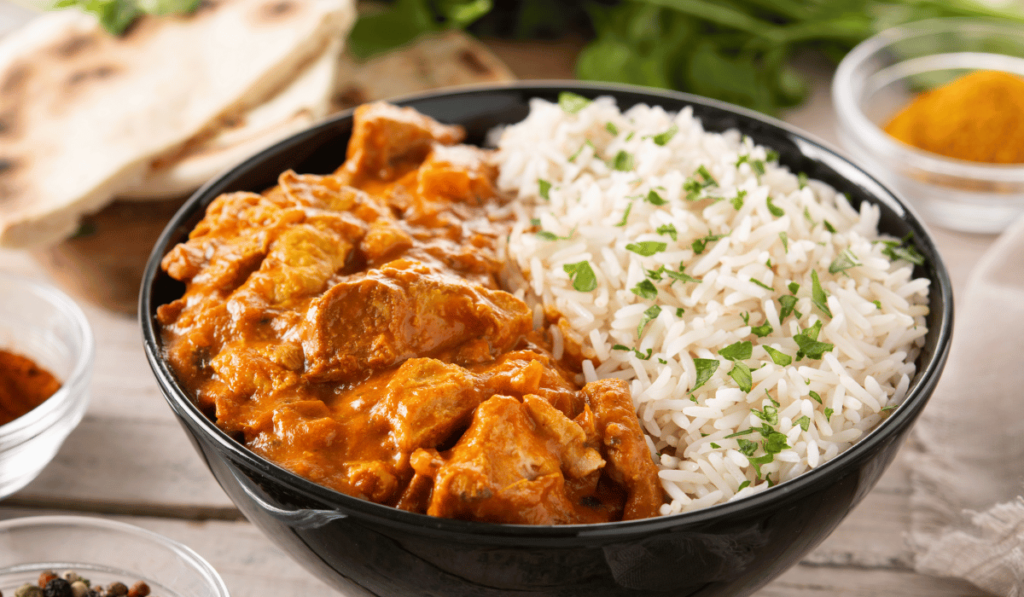
3. Step-by-Step Guide: Cooking Basmati Rice in a Pressure Cooker
Before diving into the specifics of whistle counts, let’s review the step-by-step process of cooking basmati rice in a pressure cooker:
Step 1: Rinse and Soak the Rice
Start by rinsing the basmati rice under cold water to remove any excess starch. This step helps prevent the rice from sticking together. After rinsing, soak the rice in water for about 30 minutes. This step ensures even cooking and fluffier grains.
Step 2: Measure the Water
The water-to-rice ratio is crucial for achieving perfectly cooked rice. As a general rule, use 1.5 cups of water for every cup of basmati rice. However, you may need to adjust the amount of water based on your preference and the specific brand of rice.
Step 3: Add the Rice and Water to the Pressure Cooker
Drain the soaked rice and add it to the pressure cooker. Add the measured water to the cooker as well. Stir gently to ensure the rice is evenly distributed in the water.
Step 4: Seal the Pressure Cooker and Cook
Close the lid of the pressure cooker securely. Set the pressure release valve to the sealing position. Place the cooker on the stovetop over medium heat. Once the pressure builds up, the cooker will start to release whistles.
Step 5: Release the Pressure and Fluff the Rice
After the recommended number of whistles, turn off the heat and allow the pressure to release naturally. This process can take a few minutes. Once the pressure is released, carefully open the cooker and fluff the rice with a fork. Let it rest for a few minutes before serving.
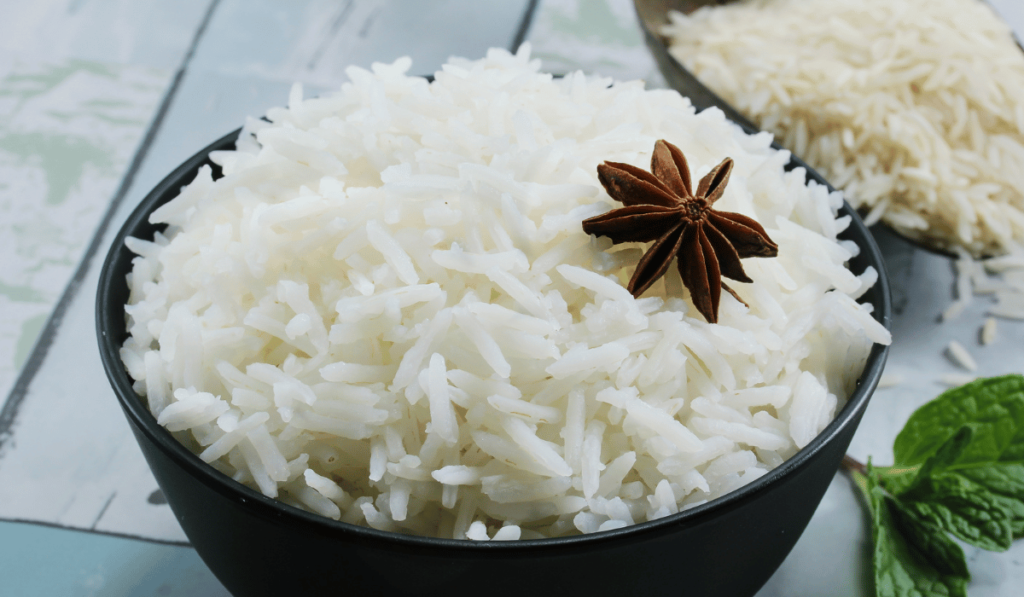
4. Understanding Whistles in a Pressure Cooker
To determine the appropriate number of whistles for cooking basmati rice, it’s essential to understand what whistles are and their purpose in the cooking process.
What Are Whistles?
In a pressure cooker, whistles refer to the release of steam and pressure during the cooking process. They are a result of the build-up of pressure inside the cooker, which is released through a pressure release valve. Each whistle indicates a certain level of pressure being reached inside the cooker.
The Purpose of Whistles in Cooking Rice
The whistles in a pressure cooker indicate that the rice is cooking under pressure. They help in determining the cooking time and ensuring that the rice is cooked thoroughly. The number of whistles required can vary based on several factors, including the type of rice, pressure cooker type and size, and the desired texture of the rice.
ALSO READ: How to Cook Chicken Sausage 3 Easy Ways
5. Factors Affecting the Number of Whistles
Several factors can influence the number of whistles needed to cook basmati rice in a pressure cooker. Understanding these factors will help you adjust the cooking time and achieve the desired texture.
Rice Variety
The type of rice you are cooking plays a significant role in determining the number of whistles required. Basmati rice and brown basmati rice have different cooking times and may require different whistle counts.
Pressure Cooker Type and Size
Different pressure cookers have varying pressure levels and capacities. The size and type of pressure cooker you use can affect the cooking time and the number of whistles required. It’s important to follow the manufacturer’s instructions for your specific pressure cooker.
Desired Rice Texture
The desired texture of the cooked rice also affects the number of whistles. Some individuals prefer their rice softer, while others prefer it slightly al dente. Adjusting the number of whistles can help achieve the desired texture.
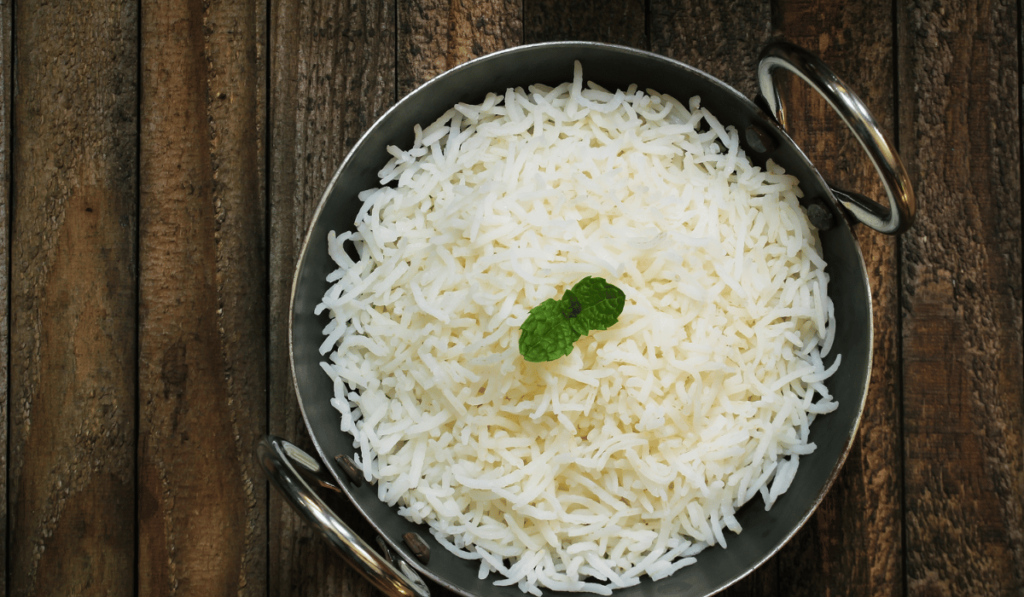
6. General Guidelines for Whistle Count
While the exact number of whistles can vary based on the factors mentioned above, here are some general guidelines for cooking basmati rice in a pressure cooker:
Basmati Rice: 1-2 Whistles
For regular basmati rice, one to two whistles are generally sufficient. This will result in perfectly cooked rice with a slightly firm texture.
Brown Basmati Rice: 3-4 Whistles
Brown basmati rice requires slightly longer cooking time compared to white basmati rice. It is recommended to cook brown basmati rice for three to four whistles to achieve the desired tenderness.
Other Rice Varieties: Varying Whistle Counts
Different varieties of rice may require different cooking times and whistle counts. Refer to the package instructions or consult a reliable recipe source for specific guidelines on cooking other rice varieties in a pressure cooker.
7. Tips for Cooking Basmati Rice in a Pressure Cooker
To ensure the best results when cooking basmati rice in a pressure cooker, consider the following tips:
Soaking the Rice
Soaking the rice before cooking helps in even cooking and fluffier grains. Aim to soak the rice for at least 30 minutes, but you can extend the soaking time up to a few hours if desired.
Water Ratio
Maintaining the correct water-to-rice ratio is crucial for achieving perfectly cooked rice. As a general guideline, use 1.5 cups of water for every cup of basmati rice. However, you may need to adjust the amount of water based on your preference and the specific brand of rice.
Heat Regulation
Adjust the heat on the stovetop to maintain a steady level of pressure in the cooker. Too high heat can lead to overcooking, while too low heat may result in undercooked rice.
Natural Pressure Release vs. Quick Release
For best results, allow the pressure to release naturally after cooking. This ensures that the rice continues to cook and absorb any remaining moisture. Quick release methods can result in unevenly cooked rice.
Fluffing the Rice
Once the pressure is released, fluff the rice gently with a fork to separate the grains. This helps achieve a light and fluffy texture.
8. Troubleshooting Common Issues
Even with the guidelines mentioned above, you may encounter some common issues while cooking basmati rice in a pressure cooker. Here are some troubleshooting tips:
Undercooked Rice
If the rice is undercooked after the recommended number of whistles, you can add a little more water to the cooker and pressure cook for an additional whistle or two.
Overcooked or Mushy Rice
If the rice turns out mushy or overcooked, reduce the cooking time and the number of whistles for the next batch. Adjusting the water-to-rice ratio can also help achieve a firmer texture.
Burnt Rice
To prevent rice from burning at the bottom of the cooker, ensure that there is enough water in the cooker and avoid cooking on high heat. Follow the manufacturer’s instructions for your specific pressure cooker to avoid burning.
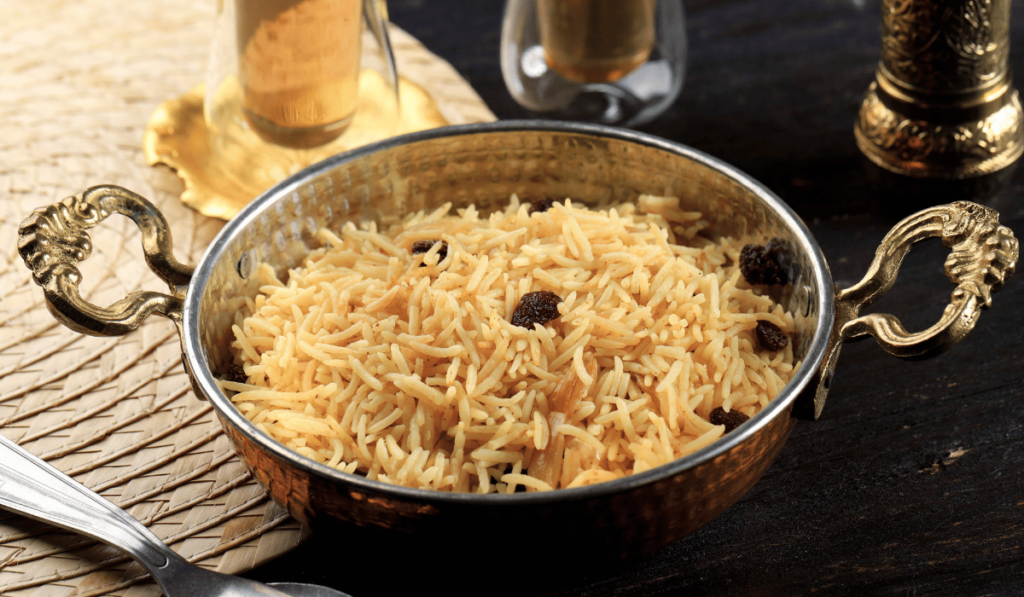
9. Alternative Methods for Cooking Basmati Rice
While cooking basmati rice in a pressure cooker is efficient, there are alternative methods you can explore:
Stovetop Method
The stovetop method involves cooking basmati rice in a regular pot. It requires a longer cooking time compared to a pressure cooker but can still yield delicious results. Follow the package instructions or reliable recipes for the stovetop cooking method.
Rice Cooker Method
If you have a rice cooker, it is another convenient option for cooking basmati rice. Rice cookers automate the cooking process and ensure consistent results. Consult the rice cooker’s manual for specific instructions.
10. FAQs: Frequently Asked Questions
Here are answers to some commonly asked questions about cooking basmati rice in a pressure cooker:
Can I cook basmati rice without soaking it?
While soaking basmati rice is recommended for even cooking, you can skip the soaking step if you are short on time. However, the rice may require additional cooking time and a slightly higher water-to-rice ratio.
How long does it take to cook basmati rice in a pressure cooker?
The cooking time for basmati rice in a pressure cooker varies based on the number of whistles and other factors. On average, it takes about 10-15 minutes of cooking time after the pressure builds up.
Can I use the same whistle count for all pressure cookers?
The recommended whistle count can vary depending on the pressure cooker type and size. Adjust the whistle count based on the specific instructions provided by the manufacturer and the factors mentioned earlier.
11. Conclusion
Cooking basmati rice in a pressure cooker is a convenient and efficient method. The number of whistles required to cook basmati rice can vary based on several factors, including the type of rice, pressure cooker type and size, and desired texture. By following the general guidelines and tips mentioned in this guide, you can achieve perfectly cooked basmati rice with ease.
Remember to adjust the whistle count based on your specific cooking equipment and personal preference. With practice and experimentation, you will find the perfect whistle count to achieve your desired rice texture. Enjoy your flavorful and fluffy basmati rice, whether it’s for a simple weeknight dinner or an elaborate feast.



